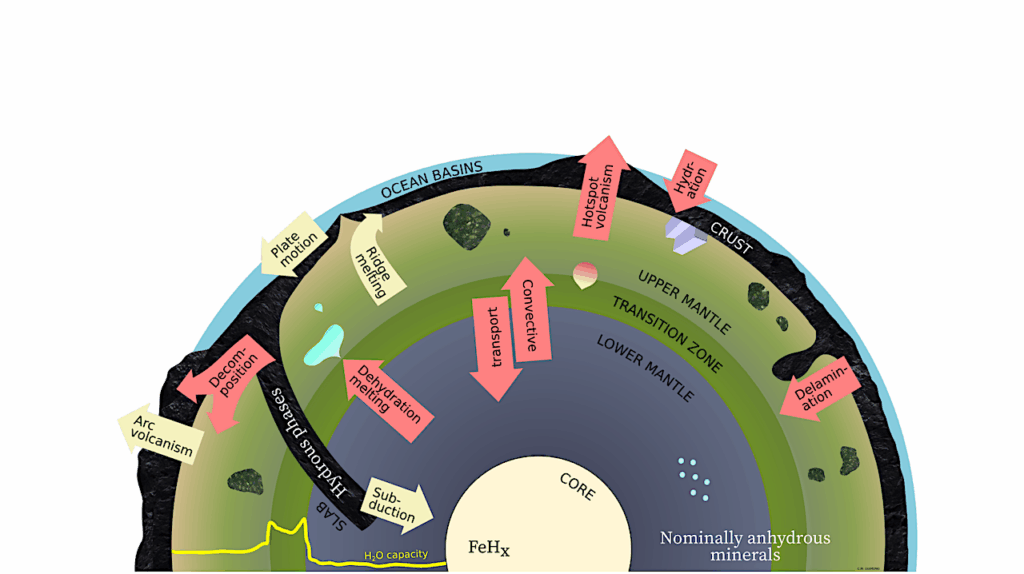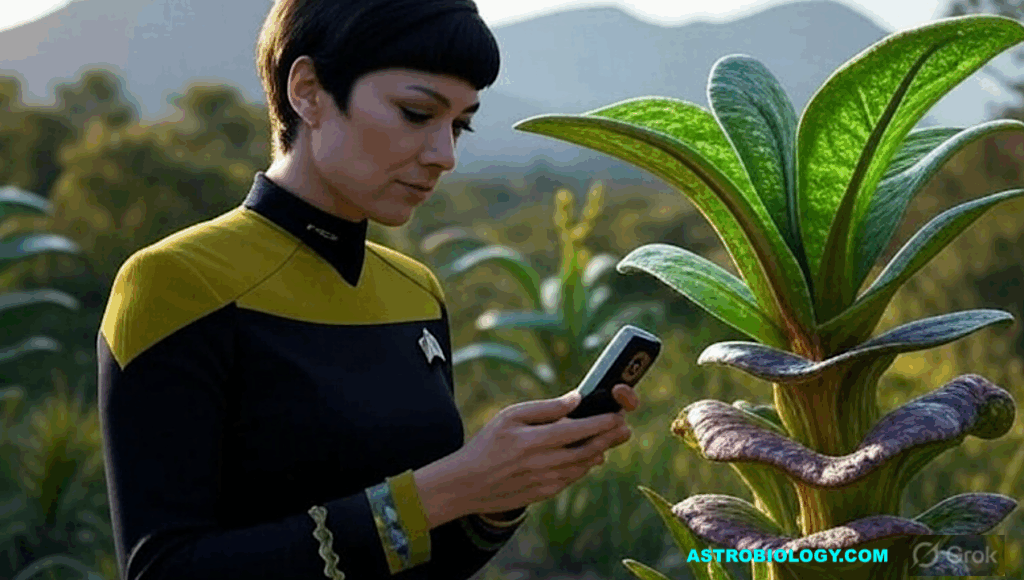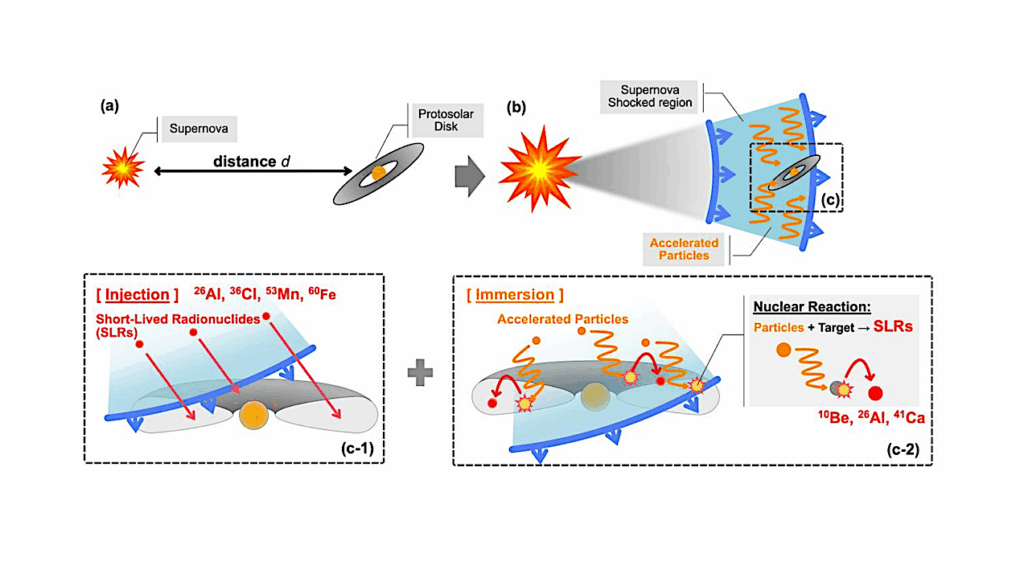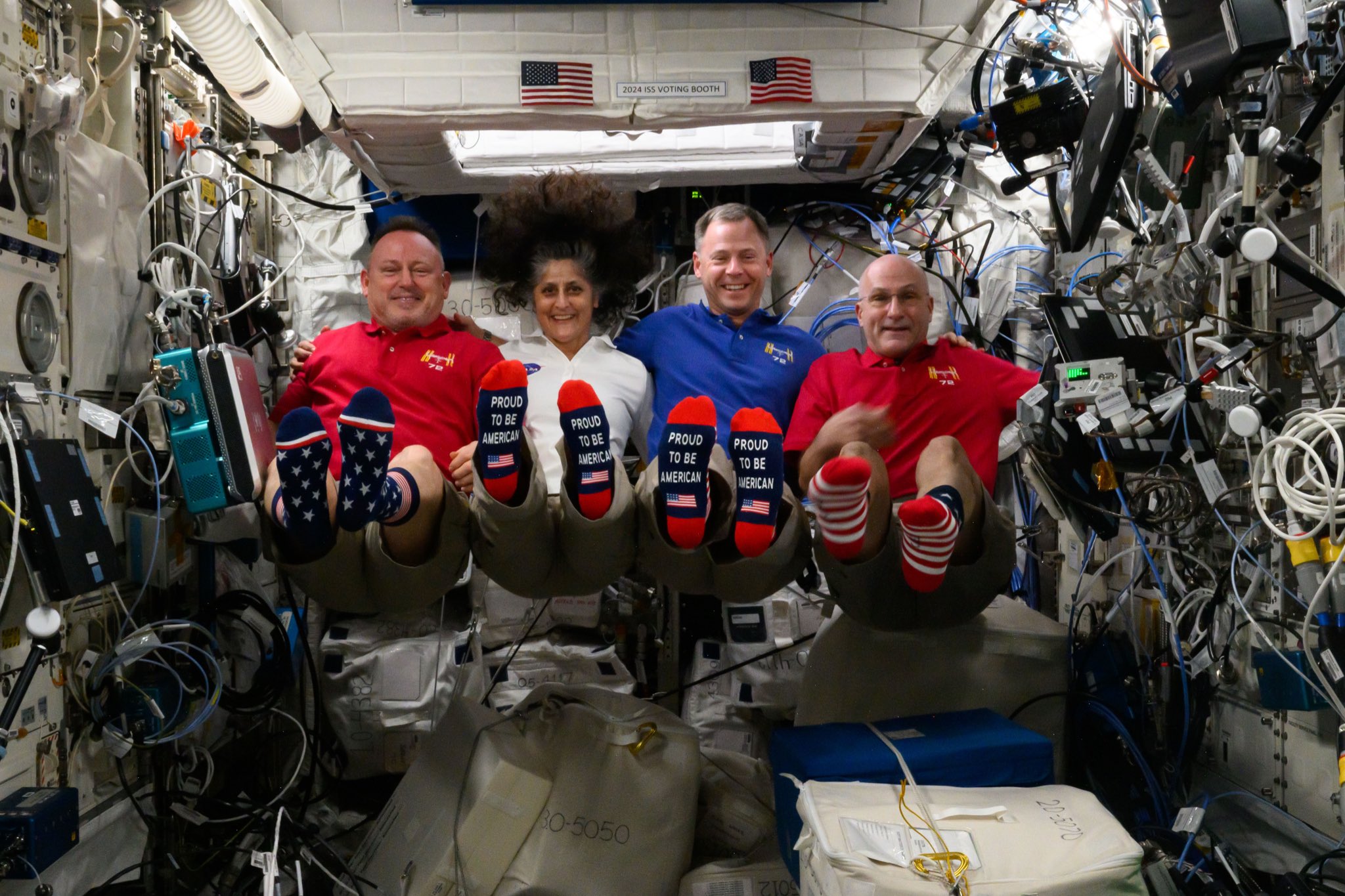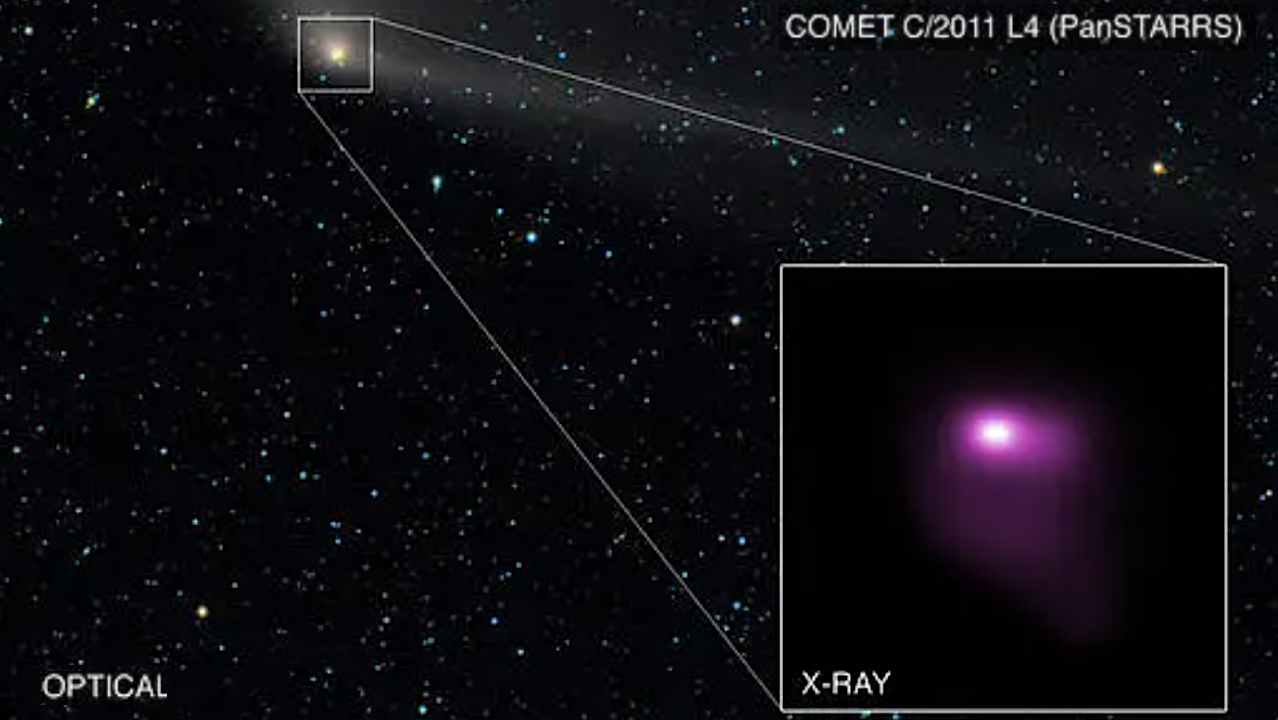Now Reading: A Planetary-mass Candidate Imaged In The Young Suns Exoplanet Survey
-
01
A Planetary-mass Candidate Imaged In The Young Suns Exoplanet Survey
A Planetary-mass Candidate Imaged In The Young Suns Exoplanet Survey
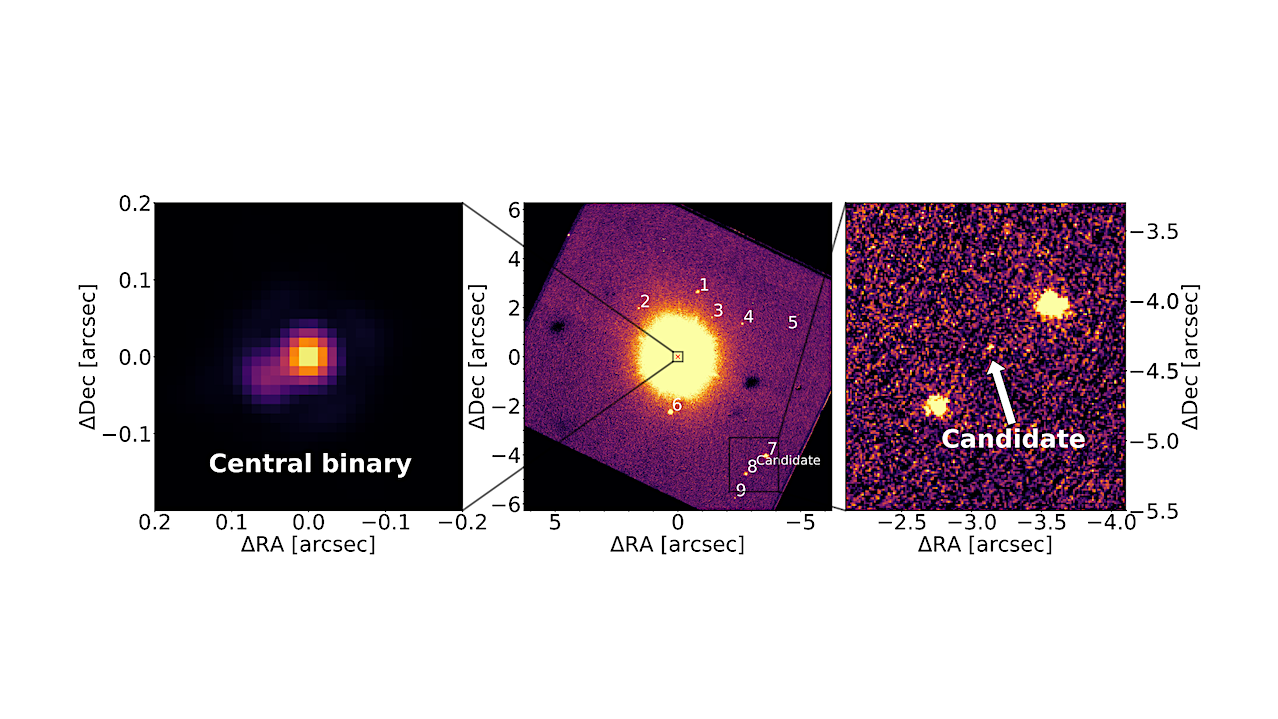

Full image of this system of the first epoch in the H band. Left panel: central stars. The fainter component is in the southeast direction of the primary star on 2018-11-15. Middle panel: stacked coronagraphic image centred on the primary star. There are ten sources in the field of view in total. The planetary-mass candidate is the faint source between the two bright background stars in the southwest. Right panel: zoomed-in image of the candidate. All images are derotated to the orientation where North is up and East is left. — astro-ph.EP
Directly imaged exoplanets in wide orbits challenge current gas giant formation theories. They need to form quickly and acquire enough material before the disk dissipates, which cannot be accommodated by in-situ formation by core accretion.
We search for wide separation (> 100 au) planetary-mass companions with the Young Suns Exoplanet Survey (YSES). Here, we present a planetary-mass candidate companion discovered in the survey.
We conducted follow-up observations of the candidate system after the first epoch observations and obtained six epochs of observations for this system between 2018 and 2024, and integral field spectroscopy of the stellar component. We report the detection of a candidate companion with H=22.04 ± 0.13 mag at a projected separation of 730 ± 10 au away from the primary star. High angular resolution imaging observations of the central star show it is a visual binary.
Acceleration data, orbital fitting, spectral energy distribution fitting and radial velocity differences all suggest that there is at least one more unresolved low-mass stellar companion in this system. The planetary-mass candidate shows a significant proper motion comparable to that of the primary star. We estimate an age of 19-28 Myr for the primary star.
We cannot confirm the companionship of the candidate due to the unknown barycentre of the stars. Long-term imaging and radial velocity monitoring of the central stars, along with spectroscopy of the candidate companion, are key to resolving the nature of this system.
If confirmed, the candidate companion would have a mass of 3-5 Mj estimated with the ATMO evolutionary model. It would be another cold low-mass planet imaged similar to 51 Eri b and AF Lep b. Its extremely wide separation from the host star would challenge the formation theory of gas giant exoplanets.
Pengyu Liu, Matthew A. Kenworthy, Beth A. Biller, Alex Wallace, Tomas Stolker, Sebastiaan Haffert, Christian Ginski, Eric E. Mamajek, Alfred Castro-Ginard, Tiffany Meshkat, Mark J. Pecaut, Maddalena Reggiani, Jared R. Males, Laird M. Close, Olivier Guyon, Isabella Doty, Kyle Van Gorkom, Alex Hedglen, Maggie Kautz, Jay Kueny, Joshua Liberman, Jialin Li, Joseph D. Long, Jennifer Lumbres, Eden McEwen, Logan Pearce, Roswell R. Roberts IV, Lauren Schatz, Katie Twitchell
Comments: 14 pages + 3 pages of appendix, 12 figures in the main text. Accepted for publication in A&A
Subjects: Earth and Planetary Astrophysics (astro-ph.EP)
Cite as: arXiv:2505.13295 [astro-ph.EP] (or arXiv:2505.13295v1 [astro-ph.EP] for this version)
https://doi.org/10.48550/arXiv.2505.13295
Focus to learn more
Submission history
From: Pengyu Liu
[v1] Mon, 19 May 2025 16:16:29 UTC (3,773 KB)
https://arxiv.org/abs/2505.13295
Astrobiology,
Stay Informed With the Latest & Most Important News
Previous Post
Next Post
-
 012024 in Review: Highlights from NASA in Silicon Valley
012024 in Review: Highlights from NASA in Silicon Valley -
 02Panasonic Leica Summilux DG 15mm f/1.7 ASPH review
02Panasonic Leica Summilux DG 15mm f/1.7 ASPH review -
 03From Polymerization-Enabled Folding and Assembly to Chemical Evolution: Key Processes for Emergence of Functional Polymers in the Origin of Life
03From Polymerization-Enabled Folding and Assembly to Chemical Evolution: Key Processes for Emergence of Functional Polymers in the Origin of Life -
 04How New NASA, India Earth Satellite NISAR Will See Earth
04How New NASA, India Earth Satellite NISAR Will See Earth -
 05And Thus Begins A New Year For Life On Earth
05And Thus Begins A New Year For Life On Earth -
 06Astronomy Activation Ambassadors: A New Era
06Astronomy Activation Ambassadors: A New Era -
07SpaceX launch surge helps set new global launch record in 2024












